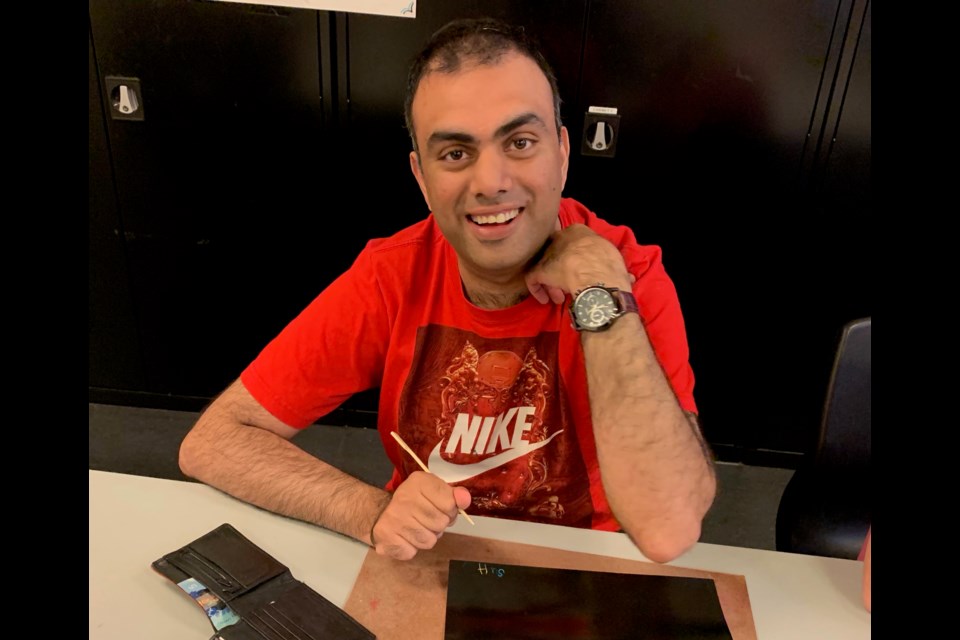A sensory art program is bringing out the inner creativity of participants of all abilities every month in Newmarket.
DeafBlind Ontario Services offers a Sensory Exploration Arts (SEA™) program at the Magna Centre that provides people with deafblindness and other abilities with an opportunity to engage with art in an environment that encourages sensory expression meaningful to each of them.
With the therapeutic benefits of art long-established, creativity can be a powerful means of communication.
The Community Services SEA™ program, which was created by DeafBlind Ontario Services in 2010, is an experiential and inclusive program for people with sensory loss or other disabilities who may not have thought of themselves as artists before.
Don’t miss out on any local news, sign up for our daily headlines email
Different themes are explored each month in the one-hour program, explained Melinda Rush, community service facilitator for the SEA™ program. During the first half of the class, the participants explore the theme through different sensory components, then create an art piece that reflects what they learned.
In Friday's session themed "Scratch That", clients of Community Living York South and Community Living Durham North felt and scratched a variety of textures — from boards created with dyed Epsom salts to "slime" concocted from hair conditioner and corn starch — to uncover a pattern, before using rainbow scratch pads to create their works of art.
"The idea is that they push things around to discover things as they go," said Rush. "The experience is different for each artist."
For instance, she said, for an artist who is tactile defensive, reaching out and exploring a new texture can be a break-through.
"For another artist, a successful class could be independently picking the colours they decide to work with. For another artist, it could be the amount of time that they sit in class and engage with different things," she added.
"It's really an open class, for a variety of abilities. But they all are amazingly creative, it just blows your mind the things they come up with and do — it can be very different from what I came to class expecting."
Deafblindness, a combined loss of hearing and vision, impacts access to information, communication and mobility. Because every person with deafblindness experiences a varying degree of sensory loss, each person will use their own unique and individual way to communicate, according to the organization.
About one per cent of Canada’s population or approximately 368,400 people are deafblind. In Ontario, an estimated 147,736 individuals are deafblind.
For more information about DeafBlind Ontario Services and Community Services - SEA™, visit here.



